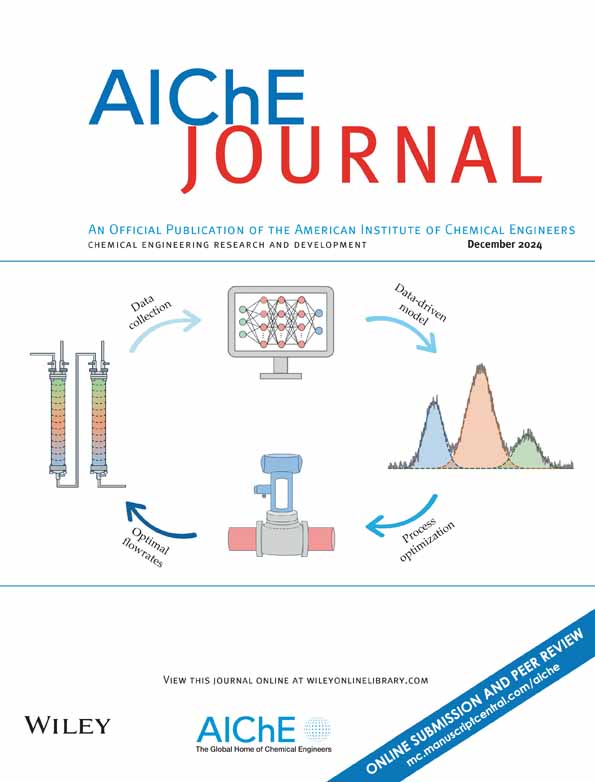电池边值问题的求解:算子理论方法
IF 3.5
3区 工程技术
Q2 ENGINEERING, CHEMICAL
引用次数: 0
摘要
采用多层介质中的反应扩散方程对具有可忽略离子和电子传导电阻的多孔电极的电池进行了建模。由于反应速率的非线性和施加电流的限制,经典的分离变量方法已不适用于电池问题。扩散部分的线性算符理论方法将电池方程转换为积分方程,可以通过逐次逼近有效地求解。将电流密度条件转化为限制条件,并应用于具有两个多孔电极和分离器的电池。假设在一个电极中扩散缓慢,使用标准内积溶液会引入非自伴随性,这种非自伴随性可以通过改性[1]来治愈。锂电池的例子证明了该方法结合非线性动力学的力量。这种方法是一种通用的方法,与计算相结合,将解决扩散反应控制下电池动力学中的各种复杂问题。本文章由计算机程序翻译,如有差异,请以英文原文为准。
Solution of boundary value problems for batteries: Operator-theoretic methods
Batteries with porous electrodes of negligible ionic and electronic conduction resistance are modeled with reaction-diffusion equations in multilayered media. The classical separation of variables becomes inapplicable to battery problems because of nonlinearities in reaction rates and constraints of imposed current. A linear operator-theoretic approach to the diffusive part converts the battery equations into an integral equation and can be efficiently solved by successive approximations. The current density condition is transformed into a restriction and applied to a battery with two porous electrodes and separator. The use of the standard inner product for solution assuming diffusion to be slow in only one electrode introduces nonselfadjointness which is cured by a modification [1]. Example of the lithium battery demonstrates the power of the method to incorporate nonlinear kinetics. This approach is a generic methodology that, combined with computation, will solve a complex variety of problems in battery dynamics in diffusion-reaction controlled regimes.
求助全文
通过发布文献求助,成功后即可免费获取论文全文。
去求助
来源期刊

AIChE Journal
工程技术-工程:化工
CiteScore
7.10
自引率
10.80%
发文量
411
审稿时长
3.6 months
期刊介绍:
The AIChE Journal is the premier research monthly in chemical engineering and related fields. This peer-reviewed and broad-based journal reports on the most important and latest technological advances in core areas of chemical engineering as well as in other relevant engineering disciplines. To keep abreast with the progressive outlook of the profession, the Journal has been expanding the scope of its editorial contents to include such fast developing areas as biotechnology, electrochemical engineering, and environmental engineering.
The AIChE Journal is indeed the global communications vehicle for the world-renowned researchers to exchange top-notch research findings with one another. Subscribing to the AIChE Journal is like having immediate access to nine topical journals in the field.
Articles are categorized according to the following topical areas:
Biomolecular Engineering, Bioengineering, Biochemicals, Biofuels, and Food
Inorganic Materials: Synthesis and Processing
Particle Technology and Fluidization
Process Systems Engineering
Reaction Engineering, Kinetics and Catalysis
Separations: Materials, Devices and Processes
Soft Materials: Synthesis, Processing and Products
Thermodynamics and Molecular-Scale Phenomena
Transport Phenomena and Fluid Mechanics.
 求助内容:
求助内容: 应助结果提醒方式:
应助结果提醒方式:


